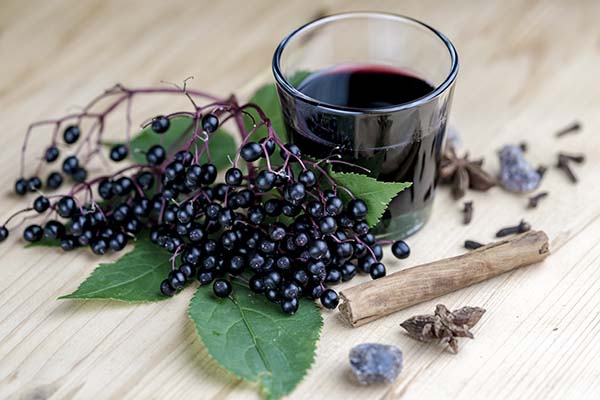Everything Elderberry
by gretchen heimsoth
It’s September, and for many of us, we are finding ourselves back to in-person school with our children, as well as most of us back at work in person. One can hardly check in to social media or turn on the television without hearing about the rise of the Delta variant. So I wanted to take a little time and talk about our dear friend, the Elderberry. Talk about Where it grows, its safety, effectiveness, constituents, and how to use it. Elderberry, or Sambucus nigra, Is a deciduous shrub or small tree. It is native from Oregon to Baja and Western Texas. It is rapid growing and loves to find moist soil near stream sides or seeps. It has been used by native people and frontier settlers for centuries. It is used for medicine, food, and dye, and the flowers are used to infuse flavors in syrups and liquors.
Elderberry is considered safe in small doses. If you find wild elderberries, they are collected around September, and then they need to be dried and cooked. You don’t want to eat raw elderberries. Unripe or uncooked berries or flowers from the plant can cause nausea, vomiting, and diarrhea. Larger amounts can cause more serious poisoning… If you buy prepared elderberry syrup or jam, you don’t have to worry about poison. And if you prepare items from dried elderberries, you also don’t have to worry.
Elderberry is high in antioxidants and vitamins. The chemical constituents in the berries please may help tame inflammation and protect the cardiovascular system. A study from Israel has shown that it helps shorten the duration of the flu by up to half!!! The plant contains chlorogenic acid and neochlorogenic acid, as well as several forms of quercetin. Chlorogenic acid helps protect the heart and modulate glucose metabolism. Quercetin lower’s inflammation, helps fight allergies, also supports heart health, and helps fight pain.
These compounds are what gives Elderberry Its magic. If you use Elderberry and syrup for food or a jam, you will use as you would use any other similar item. If you’re using Elderberry as a medicine, most common, and a honey syrup form, you generally give one tablespoon every 4 hours. Using Elderberry this way is usually considered safe. Some people are allergic, so if you’ve never consumed Elderberry and find you have any allergic symptoms after using it, the thing may be considered discontinuing.
I’ve been using Elderberry with my children for several years now. I love to make the infused honey syrup with fresh Ginger, cinnamon stick, orange peel, and whole cloves. I’ll even infuse thyme in there for extra respiratory medicinal benefit. I use local honey to ensure its real honey and keep some of the subtler benefits of consuming local honey. The syrup is easy to make and can be modified to suit your needs it’s. If it comes up too thin, you can always add a little extra honey for viscosity. And you can add or subtract the Ginger or the herbs according to your liking. Cinnamon, Ginger, and cloves are also powerful good based antivirals. I encourage including them!







